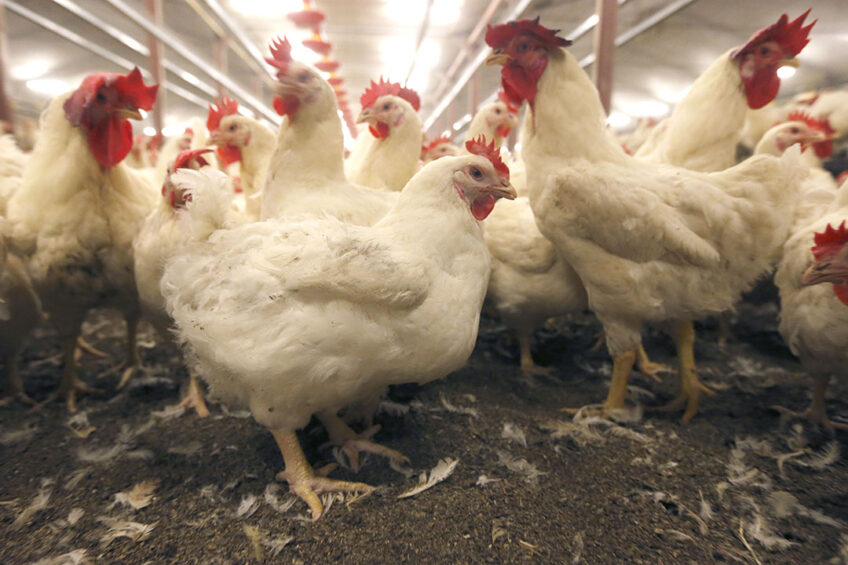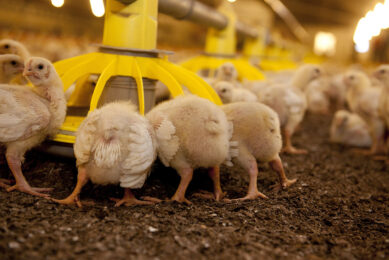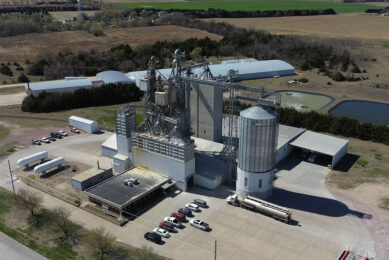Tannin-based additives as an alternative to AGPs for broilers

A combination of tannins appears to have synergistic effects comparable to the use of AGPs in broiler diets. These results were found in a recently published study in the journal PLOS ONE.
The widespread restrictions on the use of antimicrobials have led to an increase in intestinal health problems in broiler chickens, resulting in reduced profitability for farmers. An example is the increased incidence of C. perfringens necrotic enteritis (NE) in countries where the use of antimicrobial growth promoters (AGPs) has been banned. Searching for reliable alternatives to AGPs has, therefore, become a priority for the animal production sector. In addition, the efficacy of these alternatives needs to be tested in field/commercial trials under different challenging conditions.
Study setup
This study evaluated how the inclusion of a blend of chestnut and quebracho tannins can affect broiler productive performance, intestinal health, and caecal microbiota in comparison with conventional AGPs.
3 experiments were conducted:
(1) a trial comparing the effects of both additives (tannins vs AGP) on different commercial farms at the same time (Experiment 1);
(2) follow-up on one farm during an entire productive year (Experiment 2); and
(3) an experimental trial using a C. perfringens challenge model in broiler chickens (Experiment 3).
Experiment 1
Diets: (1) a conventional AGP programme or (2) a tannin-based AGP-free programme. Birds raised under the conventional AGP programme were fed with commercial diets supplemented with Enramycin (10 g/Ton) and tannin-based AGP-free programme broilers were supplemented with a blend of chestnut and quebracho tannins (1 kg/tonne).
Experiment 2
Diets: (1) conventional AGP programme (AGP rotation: Bacitracin 50 g/tonne, Avilamycin 10 g/tonne, Enramycin 10 g/tonne), or (2) tannin-based AGP-free programme (1 kg/tonne).
Experiment 3
Necrotic enteritis (NE) challenge by C. perfringens in chickens for fattening. Diets: (1) positive control: feed without tannins, NE challenged; (2) chestnut: feed with chestnut tannins, NE challenged; (3) quebracho: feed with quebracho tannins, NE challenged; (4) mix: mix of chestnut and quebracho tannins, NE challenged.
Productive performance
During Experiment 1, with different commercial farms and one type of AGP (Enramycin) in the study, similar results were observed in terms of live weight (2.621 kg vs. 2.523 kg), feed conversion (1.71 vs. 1.73), mortality (3.9% vs. 3.4%) and European Poultry Efficiency Factor (EPEF) (300 vs. 288) between farms under AGP and tannin-based programmes, respectively.
During Experiment 2, with the use of rotational AGPs, similar results were observed between AGP and tannin treatments in weekly or final body weight either at 5 weeks (1.452 kg vs. 1.491 kg, respectively) or 7 weeks (2.538 kg vs. 2.608 kg), flock uniformity expressed as CV (12.9% vs. 12.5%), feed conversion (1.767 vs. 1.762) and EPEF values (268 vs. 271), respectively. However, in the tannin-treated flocks there was a reduction in total mortality (4.169% vs. 3.823%) compared to AGP-treated flocks.
Necropsy findings
During Experiment 1 (Table 1, values in brackets), the frequency and severity of intestinal gross lesions were reduced in birds from tannin-treated farms. Jejunal gross lesions were present in 23.3% of the necropsied birds compared with 42.5% in the AGP farms. Similar results were obtained regarding lesion severity and gross lesion scores were reduced in the jejunum (0.73 vs 1.37). A similar trend to the results in Experiment 1 was also observed in Experiment 2 (Table 1, values outside the brackets), although the frequency of lesions was higher compared to the study with several commercial farms (Experiment 1).
Caecal microbiota
Bacterial groups overrepresented in birds treated with AGP in the broiler commercial study include the unclassified members of families Desulfovibrionaceae and Synergistaceae, genera Slackia, Anaerostipes and Clostridium, and the species Bacteroides coprophilus, Megamonas hypermegale and Escherichia coli. On the other hand, in the birds treated with tannins, members of the family Bifidobacteriaceae, genera Butyricimonas, Coprococcus, Ruminococcus and the species Lactobacillus helveticus and Subdoligranulum variabile were increased. Among these taxonomic groups, the genera Butyricimonas showed a positive correlation with body weight and FCR, while the genera Clostridium was correlated with reductions in productive efficiency.
Necrotic enteritis challenge
The experimental challenge with C. perfringens in an in vivo model of NE corroborated that the blend of tannins added to feed significantly reduce intestinal lesions, suggesting a synergistic effect of chestnut and quebracho tannins, as the blend of these tannins was more efficient in controlling the occurrence of NE intestinal lesions than individual tannins (Table 2).
On the other hand, the results of individual tannins suggest that each tannin provides differential activities to control NE. Chestnut was the most effective additive to control NE, which could be explained in part by a direct and strong bactericidal effect combined with differential activities along the different segments of the gastrointestinal tract as described in previous studies. While chestnut tannins can be hydrolysed in the small intestine and be readily absorbed by the mucosa, disappearing before reaching the distal GIT with a probable reduction in their antimicrobial properties, derived metabolites may contribute to disease control through other cellular processes, increasing epithelial resistance to pathogen actions and favouring recovery. In contrast, quebracho extracts contain mainly condensed tannins which are not easily hydrolysed, retaining their bacteriostatic activity against C. perfringens along the entire GIT and probably in the faeces. It was shown that the load of C. perfringens in faeces was strongly reduced by quebracho tannins, preventing litter contamination and re-infection of chickens by the faecal-oral route. Therefore, the combination of hydrolysed and condensed tannins seems to combine the individual benefits of each tannin group and thus have wholesome benefits.
Conclusion
Results from this study suggest that the use of tannin-based feed additives is an attractive alternative to AGPs in order to promote gut health and productive efficiency in broilers. What’s more, necropsy observations during field trials and results from an experimental C. perfringens challenge suggest that the blend of chestnut and quebracho tannins can help prevent and control necrotic enteritis in a synergistic manner.
The researchers concluded: “Our data support the concept of replacing AGPs with phytochemical feed additives in commercial broiler flocks, preserving health and performance results, and suggests that these kinds of additives can contribute to the implementation of AGP-free programmes.”
This article is based on a study by Enzo A. Redondo, Leandro M. Redondo, Octavio A. Bruzzone, Juan M. Diaz-Carrasco, Claudio Cabral, Victorino M. Garces, Maximo M. Liñeiro, and Mariano E. Fernandez-Miyakawa, 2022, published in PLOS ONE
.











